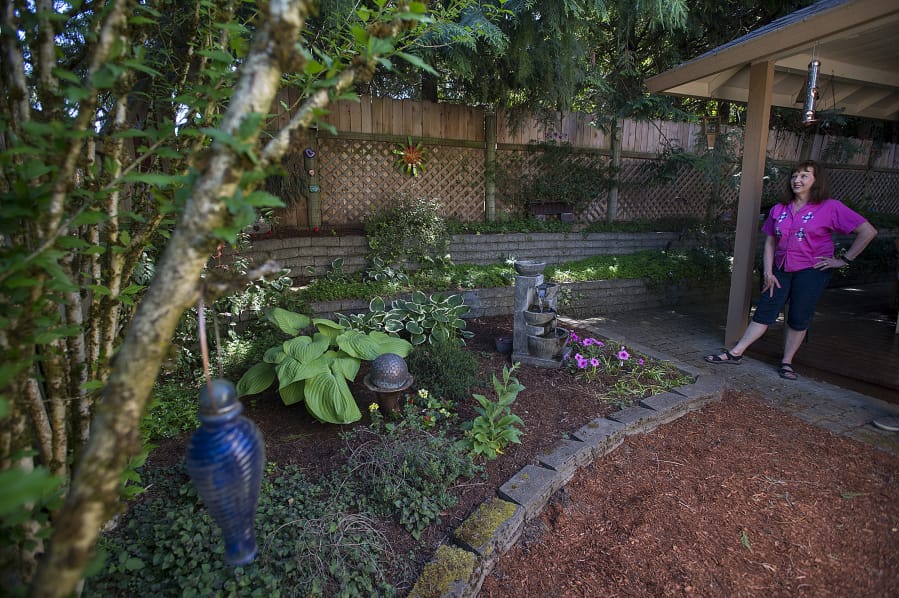SALMON CREEK — Discarded glass, a broken rake, old hose: Diane Stevens tries to integrate what used or discarded items she can into her garden, which spills onto the Bonneville Power Administration easement next to her home in shrubs and bright flowers.
When she planted some lilacs in a new bed she built next to her house, it didn’t look very good. So she came up with the idea to line the bed with empty, upturned wine bottles.
In turn, she used wine bottle corks, which are suitably porous, as a kind of mulch, helping the soil retain moisture and keep out weeds.
“The neighbors come by and they put their corks in there. Kind of like a wishing well,” she said. “They’re just kind of a whimsical thing. Plus I had a whole bunch of them and I didn’t know what to do with them.”




